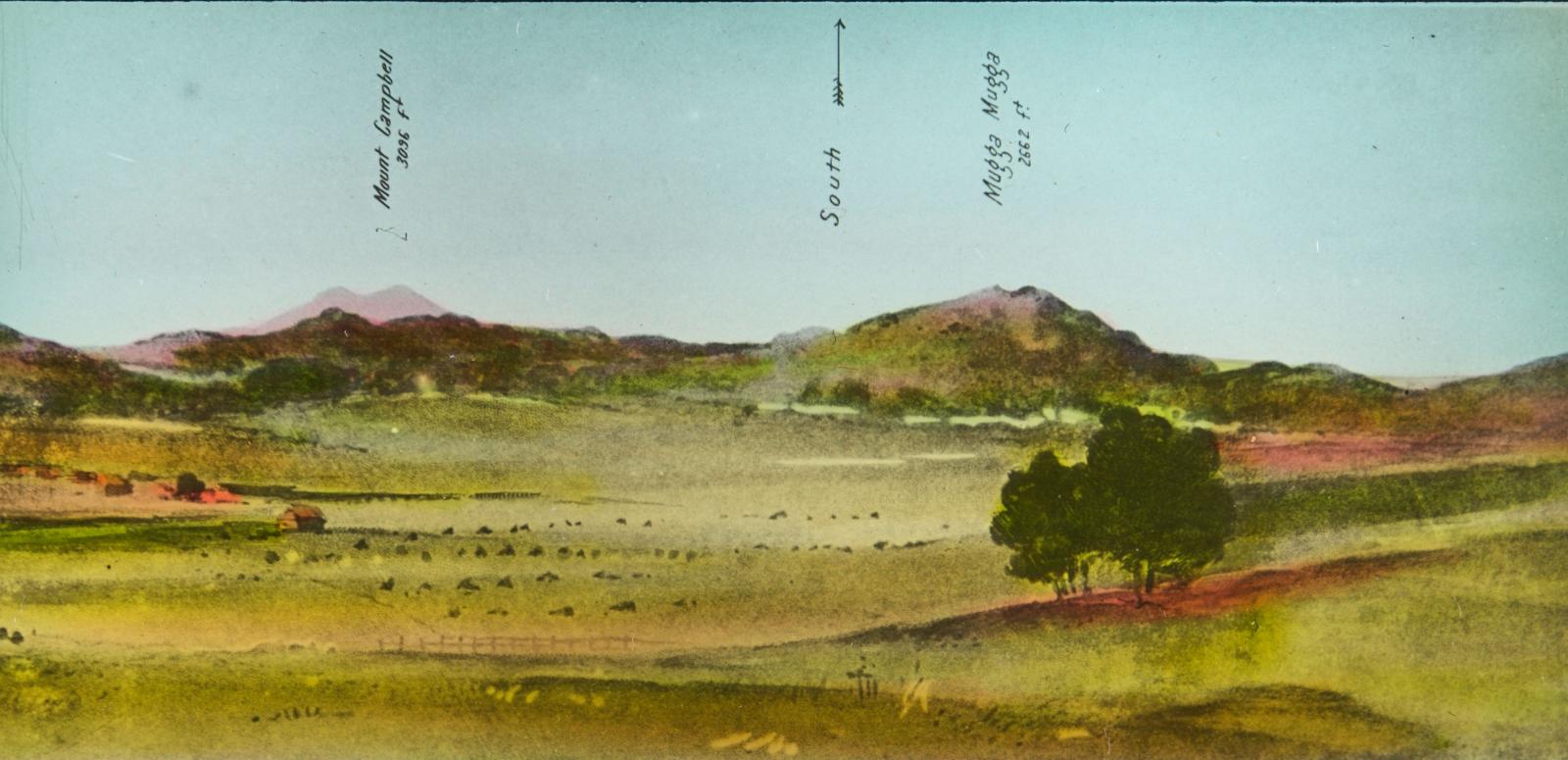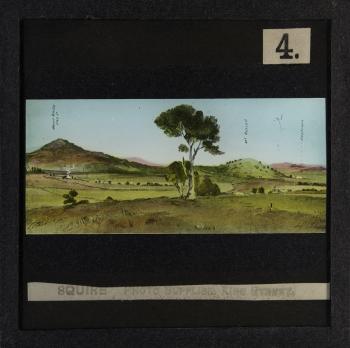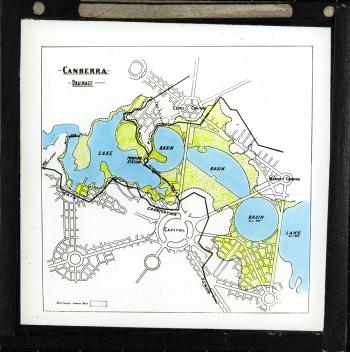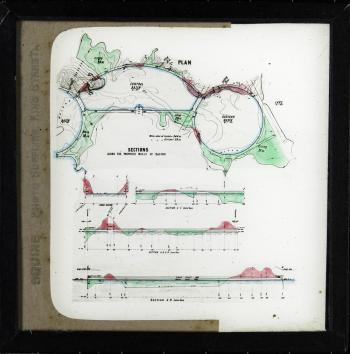The NFSA has acquired 24 glass slides by Walter Scott Griffiths illustrating his alternative vision for Australia’s future capital city. You can view them in a new curated collection.


The NFSA has acquired 24 glass slides by Walter Scott Griffiths illustrating his alternative vision for Australia’s future capital city. You can view them in a new curated collection.
Walter Scott Griffiths, along with Robert Charles Coulter and Charles Henry Caswell, entered the international Federal Capital City Design Competition in 1911.

Their entry was the first choice of the head of the judging panel but the other two judges selected Walter Burley Griffin's design as the winner and the Griffiths, Coulter and Caswell entry ultimately came fourth.
After the competition, Griffiths maintained his passionate interest in the design and construction of Canberra and, over the years, he further developed his alternative vision of Australia’s capital city. He gave illustrated lectures on his alternative vision on at least four occasions between May 1916 and November 1922.
His presentation included a set of 24 glass lantern slides, as featured in the curated collection. By using glass lantern slides containing detailed architectural drawings in his presentation, Griffiths was able to project his design for Canberra onto a screen for his audience, much like we do today when we give PowerPoint presentations.
By conducting his lecture in this way, Griffiths was able to compare and contrast his design with Walter Burley Griffin's and communicate the complex calculations he had made, to convince the audience of the superiority of his ideas.
In his presentations, Griffiths argued that the design for Canberra should take into account the topographical layout of the site and should attempt to preserve more of its picturesque natural features, specifically the undulating nature of the landscape.

He claimed his design would be cheaper by limiting the amount of excavation and infill needed, which would also result in a more direct flow of traffic.
In 1911, the Griffiths, Coulter and Caswell competition entry had proposed 'a noble and beautiful city, symmetrical in design, with commodious thoroughfares, attractive waterways, and imposing buildings, all combining to make the city what it should be – Queen City of the Southern Hemisphere'.
By 1916, Griffiths had refined his ideas, and in response to concerns about the cost of creating Walter Burley Griffin’s vision of Canberra, had come up with some new suggestions about what Canberra should look like.
By adding his voice to the many that were critiquing Walter Burley Griffin’s design for Canberra, Griffiths could demonstrate to his peers his professional prowess as a draftsperson and town planner. The design and construction of Canberra was a hot topic of discussion at the time, with many wondering why it was taking so long to build the new capital and questioning the massive expenditure on the project.

At the time Griffiths was giving this presentation, there were fierce debates around construction of the lake in Canberra, as evidenced by discussions at the Parliamentary Works Inquiry into 'Dams for Ornamental Waters – Canberra' which took place between July 1915 and November 1916.
Concerns about the lake focused on the cost of excavation and infill, flooding, mosquito plagues, erosion of the banks, insufficient water sources, stagnating water and silting.
At the Parliamentary Works Inquiry, there was also discussion about the placement and timing of construction of the proposed railway for Canberra with suggestions that there should be a railway station near Parliament House and that earthworks from construction of the railway could be used to build a dam for the lake.
You can see all 24 glass lantern slides from Griffiths' presentations to surveyors, town planners and engineers in our curated collection.
Main image: taken from Cycloramic View of Canberra Capital Site (1911) by Robert Charles Coulter, NFSA: 1585336.
The National Film and Sound Archive of Australia acknowledges Australia’s Aboriginal and Torres Strait Islander peoples as the Traditional Custodians of the land on which we work and live and gives respect to their Elders both past and present.